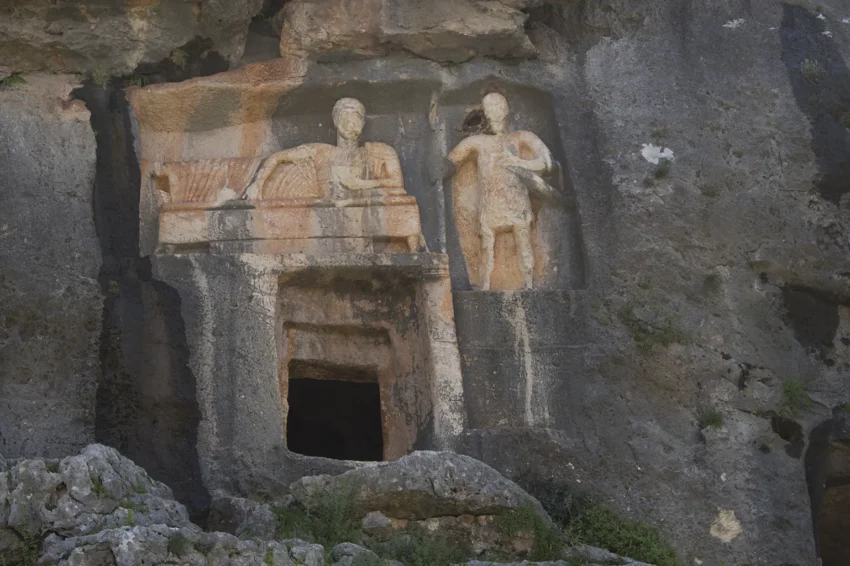Exploring the Çanakçı Rock Tombs: A Glimpse into Ancient History
The Çanakçı Rock Tombs in Mersin Province, Turkey, are an intriguing historical site. They are located just west of the famous Kanlıdivane sinkhole. These tombs offer a unique glimpse into the Roman Empire’s influence in the region.
Get your dose of History via Email
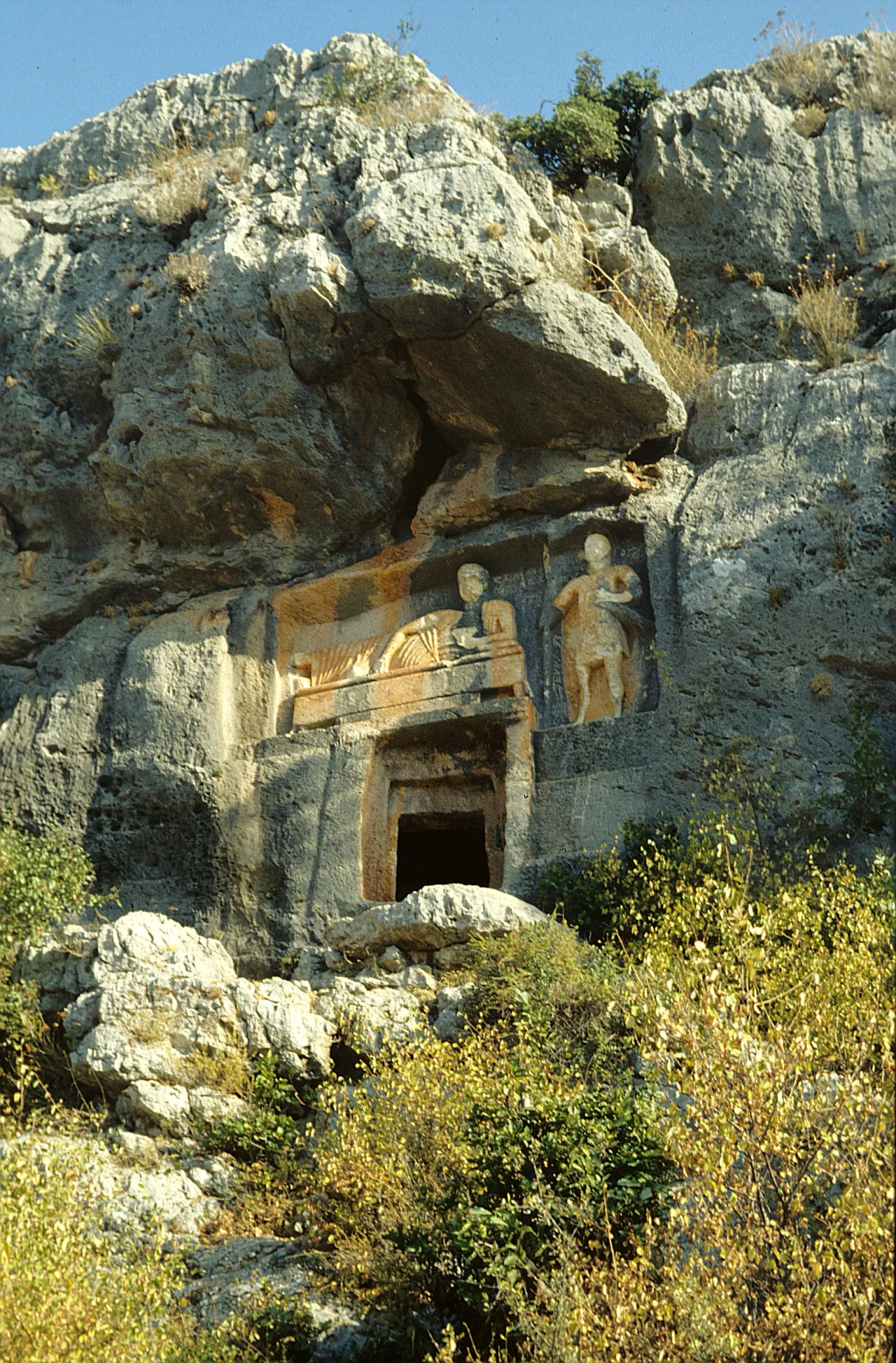
Geography and Location
The Çanakçı Rock Tombs sit at an elevation of about 225 meters (738 feet). They are carved into the rocks on the southern side of a road that runs parallel to the D.400 highway and the Mediterranean coastline. This location is a few meters above road level, making the tombs relatively easy to access. The site is 6 kilometers (3.7 miles) from Kumkuyu, 19 kilometers (12 miles) from Erdemli, and 56 kilometers (35 miles) from Mersin.
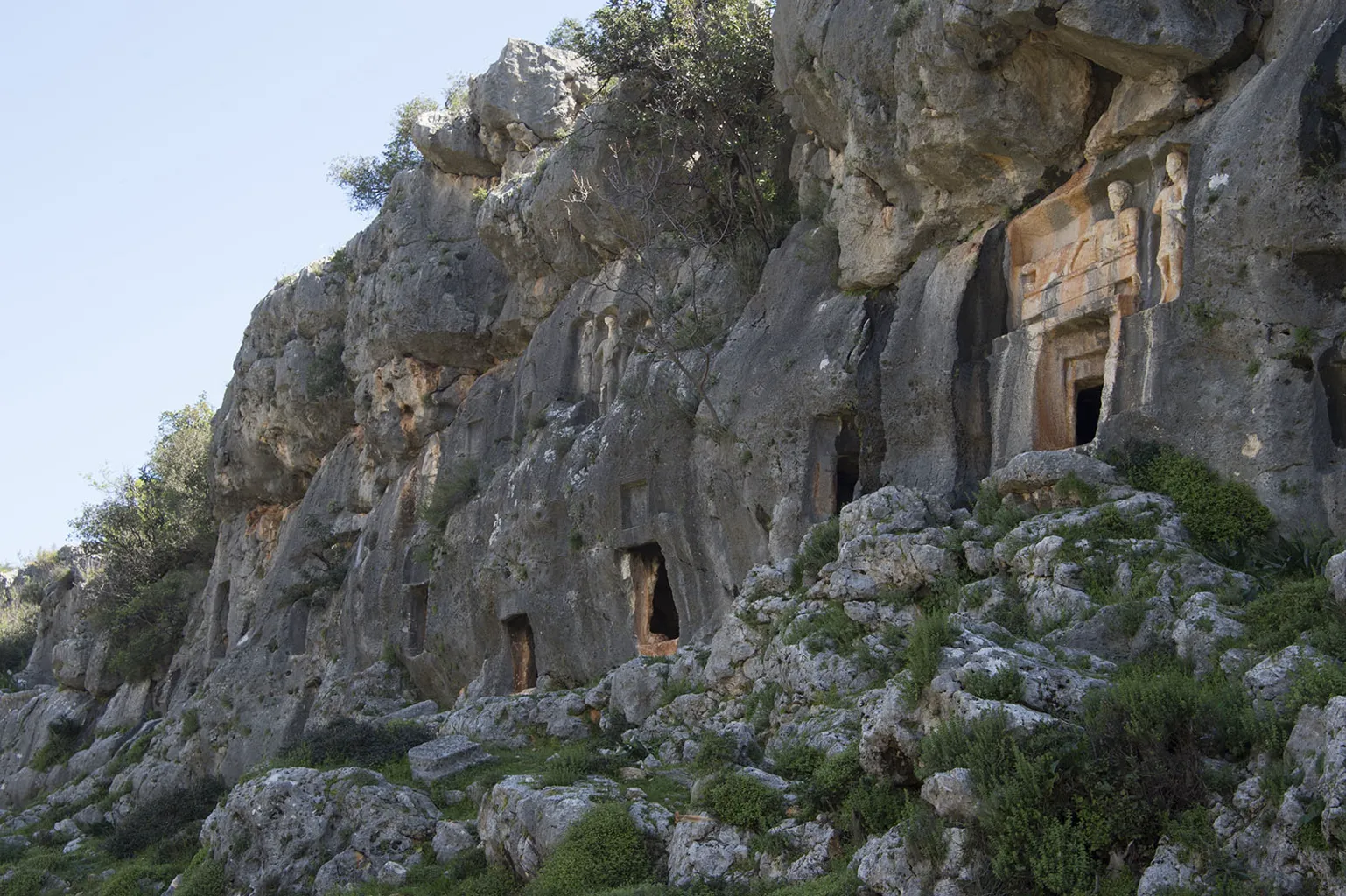
The Tombs’ Historical Significance
These tombs are part of the western necropolis of Kanlıdivane. They date back to the 2nd century AD, a time when the Roman Empire was at its peak. The tombs were skillfully carved into the rock, with each chamber featuring a rectangular opening that could be sealed with a stone block. Most of these chambers contain three tombs.
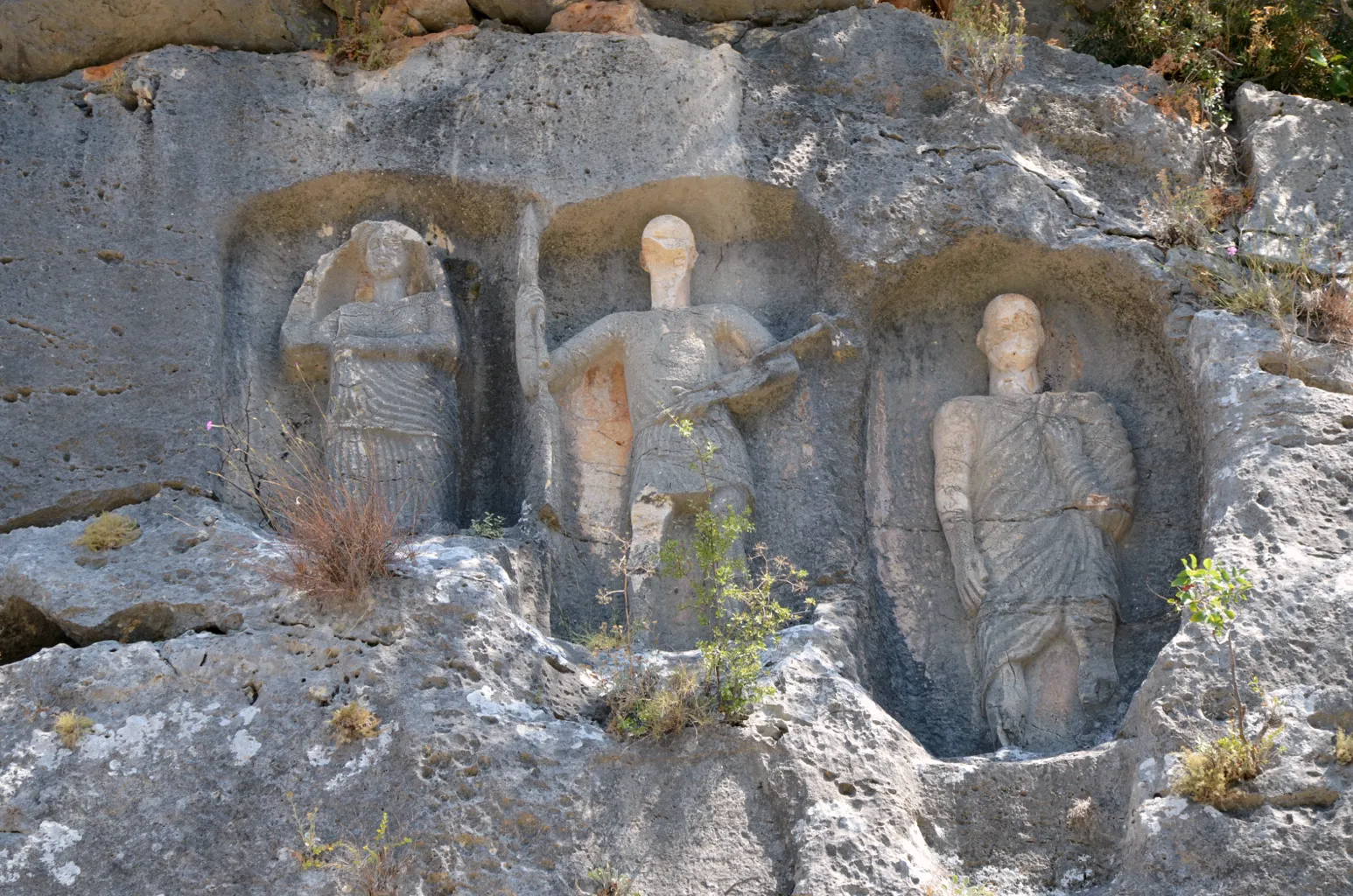
What sets these tombs apart are the carvings above the entrances. These carvings depict figures of the deceased, including a soldier with a lance and battle-axe, a man reclining on a couch, and two women. These images offer a fascinating insight into the lives and status of the individuals buried there.
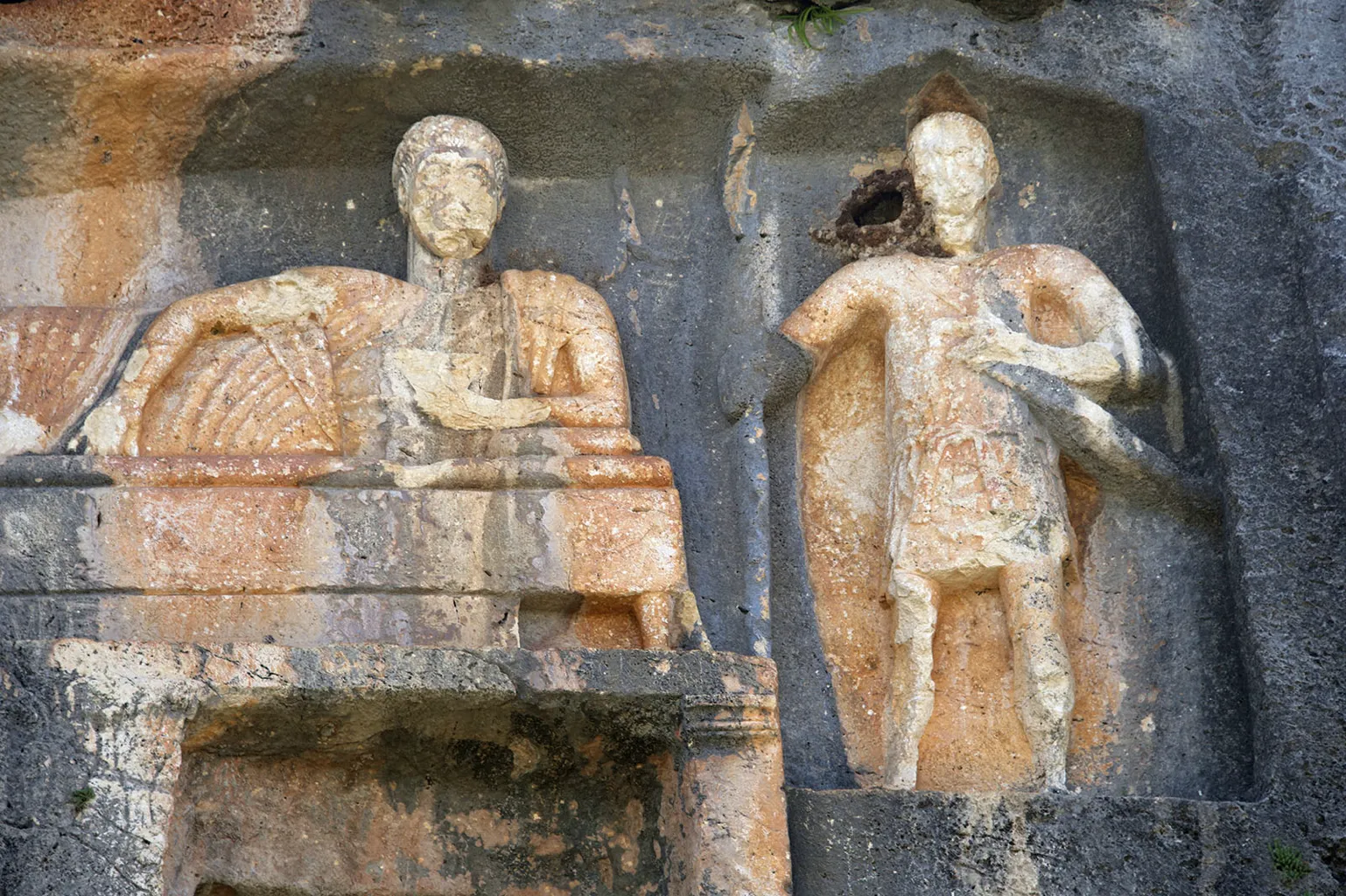
Two inscriptions have survived over the centuries. One of these inscriptions serves as a warning to potential grave robbers, threatening them with a fine payable to a local temple. The other inscriptions reveal the names of two of the deceased: Appas and Hekataios. These names provide a personal connection to the past, reminding us of the people who once lived in this area.
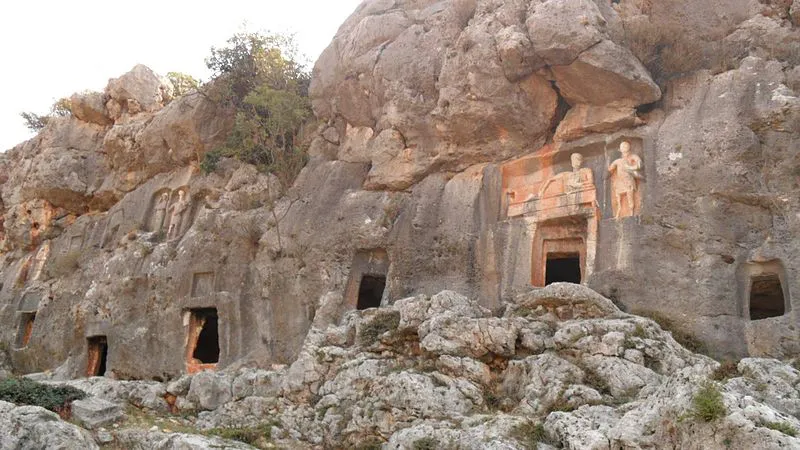
Conclusion
The Çanakçı Rock Tombs are more than just ancient burial sites; they are a window into the cultural and historical landscape of the Roman Empire in this region. The carvings and inscriptions offer a rare glimpse into the lives of the people who lived here nearly two thousand years ago. Whether you’re a history enthusiast or just curious about ancient civilizations, the Çanakçı Rock Tombs are worth exploring.
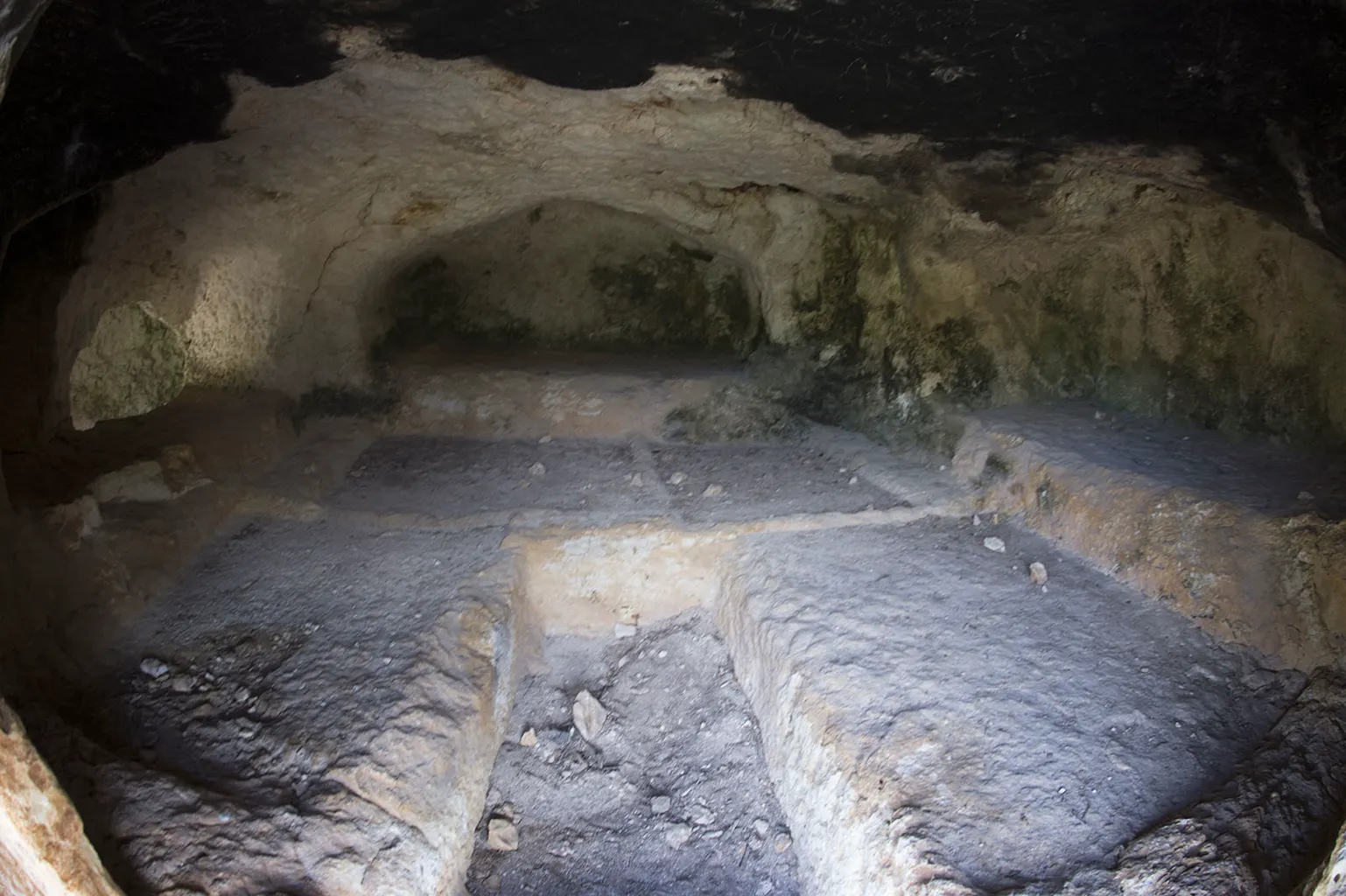
Sources:

